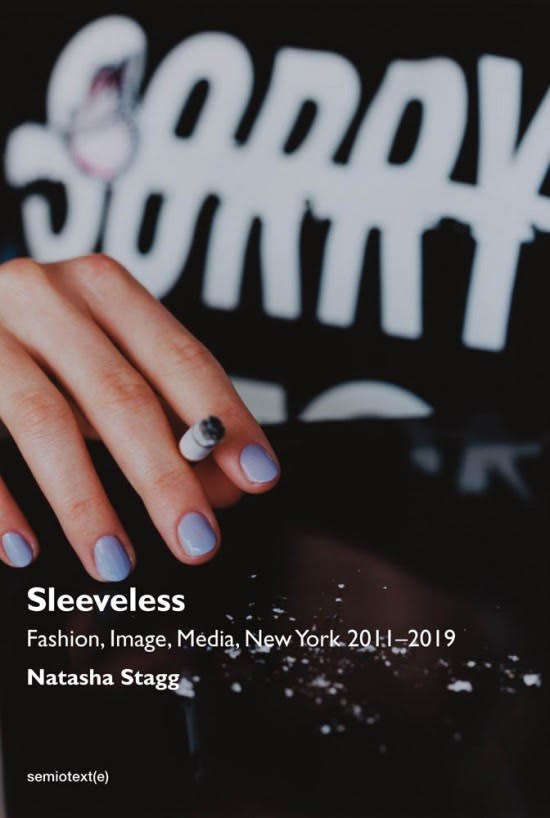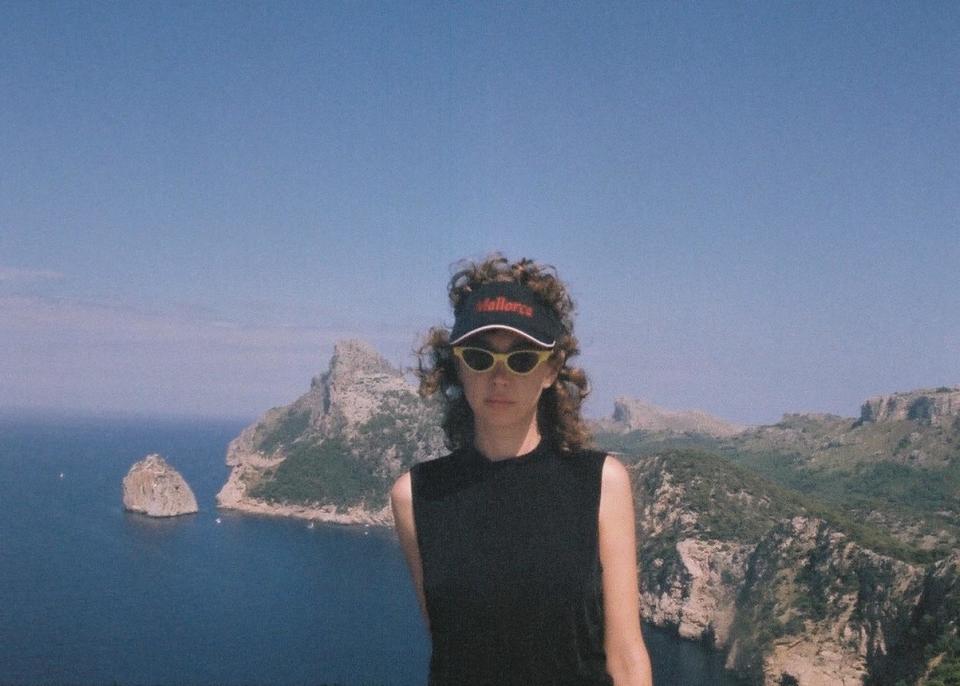Natasha Stagg’s Sleeveless Describes the New York That We Hate to Love

sleeveless-natasha-stagg-6.jpg
Photo: Courtesy of MIT PressIn her second book Sleeveless, author Natasha Stagg approaches her life in New York from 2011 to 2019 as if she is not living in it. Her voice is a dry, all-seeing third eye, volleying from a helicopter view of the city to a street-level perspective. Sleeveless, a series of essays, some previously published and some new, is an anti-fantasy of New York, and the antithesis of what is usually projected in films, books, and movies. There is no grime and there is no glamour. “I don’t see the New York that we live in very well reflected in popular culture or TV shows and movies,” says Stagg over the phone. “It is a very particular and interesting New York to live in.”
Related Stories
Instead of those well-known stereotypes, Stagg’s chapters range between fiction and nonfiction, sometimes with a whiff of experimental liberty, inhabiting a sphere of media, fashion, and dating—all under the umbrella of a rent-soaring, just-trying-to-survive New York. In Stagg’s version of New York, there is no beloved dirty nostalgia with porno shops in Times Square, and there are no parent-funded Girls-style apartments. Sleeveless is not really about New York, but rather revolves around existing in the city. “If you live in it, that’s your whole life…navigating living there,” says Stagg. In this New York, there are no drug-fueled parties, but rather advertisement-fueled parties. There is the dwindling state of media. There is the uber-rise of the It girl on both a macro and micro scale. There are the bedbugs—a whole chapter is devoted to how they burrow under the skin, burn, itch, and yet ultimately bring people closer together.
Stagg, a former magazine editor who has since ventured into the world of freelance and moonlights as a copywriter for Balenciaga, uses laser precision when speaking about the world of fashion. In the essay “Bellwether Boots,” Stagg writes about the rise of the Vetements thigh-high red boots from fall 2017 that appeared during the era of the Trump presidency. Some of her observations about the sky-high, Russian-red boots are ominous, a metaphor for our current, distorted political state: “Before we heard conspiracy about the collusion of the White House with the Kremlin, we were—eerily—reminded of Russia’s integration with globalized markets by way of retro looks,” she writes.
Fashion can absorb the political currents of the times, but Stagg—in skilled and brutally honest commentary—notes that its success varies, as with how it reacted to Trump’s ascension to office. “Brands popped buttons in press notes, scrambling to align themselves with causes for social justice,” she writes. Stagg name-checks Versace’s buzzword T-shirts, printed with slogans like “Equality” and “Loyalty,” and Missoni’s pink Pussyhats, which littered the runways. Stagg argues that this craze of feel-good buzzwords and hashtags was irksome and reactionary, epitomized by the moment when now-defunct label Public School sent down siren-red hats à la Trump’s signature “Make America Great Again” cap, rebranded with the quote “Make America New York.” “Telling one red cap apart from a ‘Make America Great Again’ cap is impossible from a distance—and isn’t it the point of those original caps to identify a Trump supporter from far range?” she points out.
While fashion was so focused on getting resistance messages out there via hashtagged T-shirts and reworked Trump hats, the effect of Vetements’s red cuissardes influenced the runways of other brands without any notice and, a few years later, even seem the more classic trend in retrospect. “They’re an example of how fashion integrates the zeitgeist without necessarily trying to,” says Stagg. “So they’re not an overt political message, but they have to reflect a certain aesthetic that is pervasive in the minds of designers.”

natasha-stagg-sleeveless-5.jpg
Within the megawatt fashion sphere, there is the allure and cult of celebrity. Stagg investigates the idea of the It girl. In the section “Confidence,” Stagg talks about downtown cult Instagram star-artist-performer Alexandra Marzella, and in “Notoriety,” she interviews the model Amina Blue, who was christened in Calabasas, California. Spliced into the chapter is a discussion of a fictional star from The Real World, Krystal, and Coco Gordon Moore. Sometimes, these women come into our periphery as fast as they fade; her critique on the robot-influencer Lil Miquela—a computerized social media star launched in 2017, who boasts 1.6 million followers—philosophizes about the rise of It girls and consumer culture. Stagg talks about how buying into an idea such as Lil Miquela, no matter how fantastical, ultimately realizes it. “The scariest part of Black Mirror episodes is always that the victims of technology are destroyed by their complicity. We know it’s not real, but when we buy it, we are making it real,” Stagg argues. It's impossible to talk about It girls and the cult of celebrity without referencing the Kardashian family; Stagg artfully uses the phenomenon of the Kardashians to define our hopes, dreams, and fears, and even to illustrate the future: “It could be said that the Kardashians embody the fear of women: a fear of aging, of irrelevance, of being subsumed, or worse, of being de-feminized.”
Sure, many of these subjects aren’t explicitly New York–related—instead, they’ve all come into Stagg’s life while she worked and lived in the city. But when New York itself does directly appear, Stagg approaches it honestly. In the section “Out of State,” directly following an essay about a self-obsessed woman from Arizona (more concerned with how she looks after getting a DUI instead of the actual DUI), Stagg talks about her former relationship with a sanitation worker from Staten Island—or, as Stagg calls him, with what she terms “privileged fascination,” a “garbage man.” She is self-aware about her own discomfort with the relationship and her assumptions about him: “It was another novelty, something to tell my friends the next time we got together for margaritas after work. But then I saw him, his strong features and long eyelashes, and I heard his Staten accent make jokes about literature that were smart, but at half-speed, punctuated too often with ‘like,’ like some movie sidekick. He was one of the characters that the movie star I used to date played, but for real.”
And if you’ve lived in New York, haven’t you had one of those relationships? The one that seems like a fleeting, romantic blip to talk about to friends after it has ended, but that also shows us more about ourselves than we’d care to admit: the misconceptions, the flaws, the self-regard? And even if you haven’t lived in New York, Stagg will still make you wish that you did have a relationship like that; one that thrusts you into a new situation and tests your mettle—that forces you to turn yourself over and inspect what’s there. In fact, that sounds like living in the very New York she describes.
Originally Appeared on Vogue


